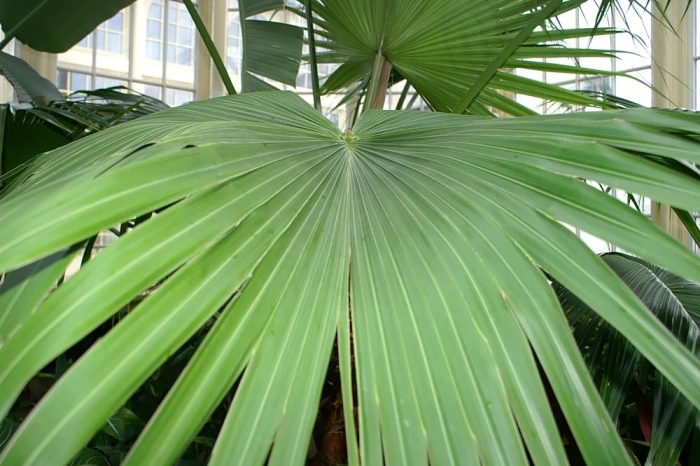Fountain Palm
(Livistona chinensis)
Fountain Palm (Livistona chinensis)
/
/

Photo by David J. Stang
CC BY-SA 4.0
Image By:
Photo by David J. Stang
Recorded By:
Copyright:
CC BY-SA 4.0
Copyright Notice:
Photo by: Photo by David J. Stang | License Type: CC BY-SA 4.0 | License URL: https://creativecommons.org/licenses/by-sa/4.0 | Uploader: David Stang | Publisher: Wikimedia Commons | Title: Livistona_chinensis_1zz.jpg | Notes: User created page with UploadWizard |






























Estimated Native Range
Summary
Livistona chinensis, commonly known as Fountain Palm, is an evergreen palm native to Japan, Taiwan, and southern China, where it thrives in subtropical forests and coastal swamps. It can grow to a height of 25-30 feet (8-9 meters) with a spread of 12-15 feet (3.7-4.6 meters). The palm has a single, slender trunk and large, fan-shaped leaves that droop gracefully, giving it a fountain-like appearance. The leaves are a deep green, and the palm produces inconspicuous cream and white flowers in the spring, followed by small, black fruits that are not particularly showy.
Fountain Palm is valued for its tropical aesthetic and is often used in urban landscapes, gardens, and as a container plant for patios and indoor spaces. It is relatively low maintenance, tolerating a range of light conditions from full sun to part shade. While it prefers medium moisture, it can tolerate some drought once established. It is adaptable to various soil types, provided they have good drainage. However, it is slow-growing and may take many years to reach its full size. Gardeners should be aware that Livistona chinensis can become invasive in some regions, such as Florida, where it has escaped cultivation and naturalized in local ecosystems.CC BY-SA 4.0
Fountain Palm is valued for its tropical aesthetic and is often used in urban landscapes, gardens, and as a container plant for patios and indoor spaces. It is relatively low maintenance, tolerating a range of light conditions from full sun to part shade. While it prefers medium moisture, it can tolerate some drought once established. It is adaptable to various soil types, provided they have good drainage. However, it is slow-growing and may take many years to reach its full size. Gardeners should be aware that Livistona chinensis can become invasive in some regions, such as Florida, where it has escaped cultivation and naturalized in local ecosystems.CC BY-SA 4.0
Plant Description
- Plant Type: Tree
- Height: 25-30 feet
- Width: 12-15 feet
- Growth Rate: Slow
- Flower Color: Cream, White
- Flowering Season: Spring
- Leaf Retention: Evergreen
Growth Requirements
- Sun: Full Sun, Part Shade
- Water: Medium
- Drainage: Medium
Common Uses
Bird Garden, Low Maintenance, Street Planting
Natural Habitat
Subtropical forests and coastal swamps
Other Names
Common Names: Chinese Fan Palm, Chinese Fountain Palm, Chinesische Livingstonpalme, Palmier Évantail De Chine, Palmeira-Leque-Da-China, Falsa-Latânia
Scientific Names: , Livistona chinensis, Livistona chinensis var. subglobosa, Livistona subglobosa, Livistona sinensis, Livistona oliviformis, Saribus oliviformis, Saribus subglobosus, Chamaerops biroo, Corypha robusta
GBIF Accepted Name: Livistona chinensis (Jacq.) R.Br. ex Mart.